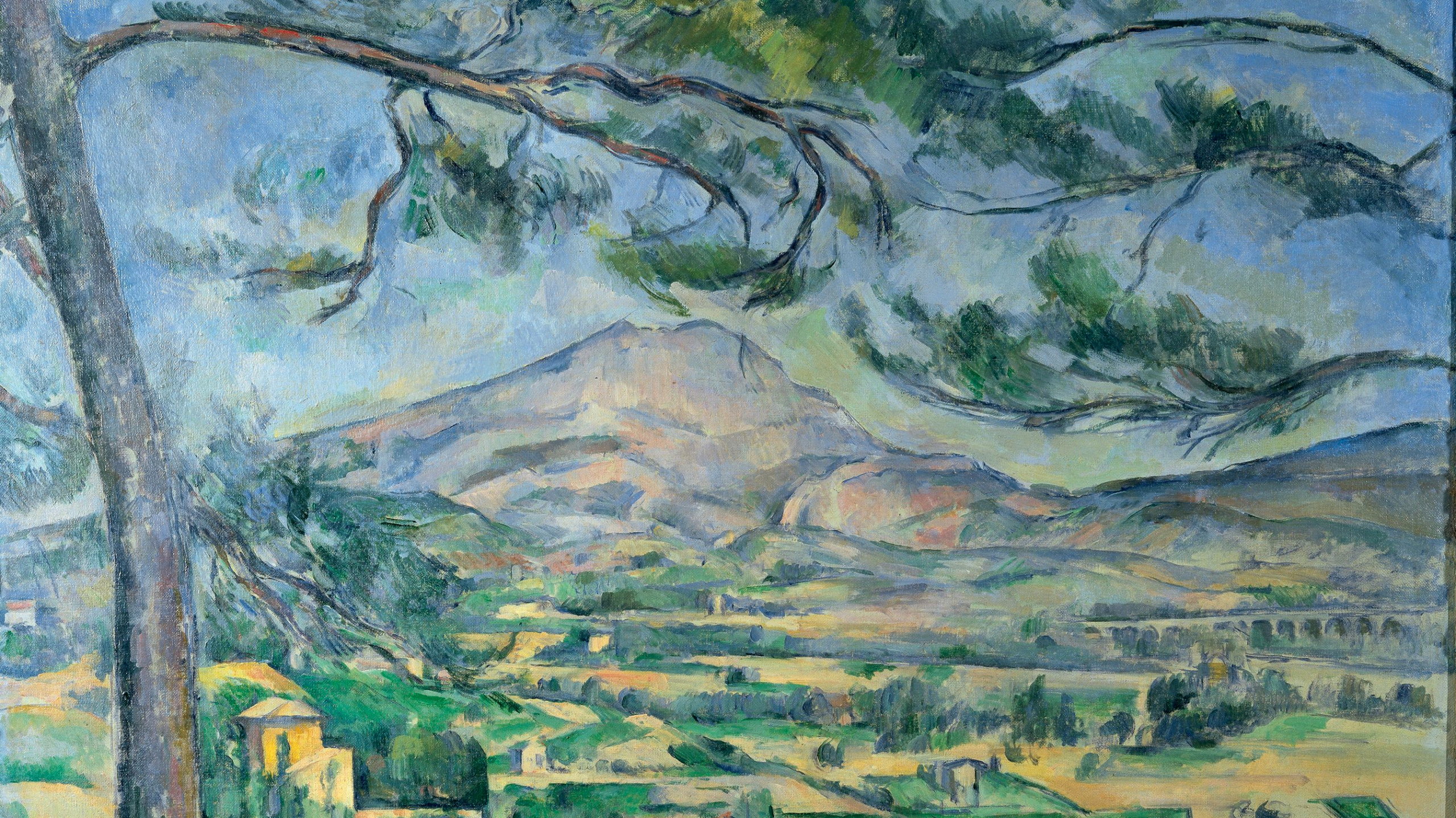
The Courtauld Cézannes
26 June – 5 October 2008
“… a condensed miracle of masterpieces …”
Financial Times
“… a landmark in the study of this great artist’s work …”
The Daily Telegraph
The Courtauld Gallery holds the most important group of works by Paul Cézanne (1839-1906) in Britain. This exhibition presented the entire collection for the first time with major paintings such as the iconic Montagne Sainte-Victoire (1887) and Card Players (1892-5) shown alongside rarely seen drawings and watercolours.
Also on display was a previously unexhibited group of nine autograph letters in which Cézanne reflects upon the principles of his artistic practice. Extensive new research by the Courtauld’s Department of Conservation and Technology added fresh insights into the artist’s working methods and techniques. This celebration of the Courtauld’s Cézannes was the stunning climax of the 75th anniversary programme.
The majority of The Courtauld Gallery’s collection was put together by the industrialist Samuel Courtauld (1876-1947) and formed part of his founding gift that established the Courtauld Institute of Art in 1932 as the first centre in Britain dedicated to the study of art history. Courtauld assembled his collection of Cézannes between 1923 and 1929 at a time when the artist was regarded with hostility and suspicion by the British art establishment. It was only in 1925, at Samuel Courtauld’s insistence and with his financial support, that the national collections were able to acquire their first painting by the artist.
Courtauld’s conversion to the art of Cézanne came in 1922 when he visited an exhibition at the Burlington Fine Arts Club in London entitled The French School of the Last Hundred Years. He wrote later of his epiphany, “At that moment I felt the magic, and I have felt it in Cézanne’s work ever since”. The following year he bought, for his private collection, one of the most important and complex of Cézanne’s late still lifes, Still life with Plaster Cast ( c.1894). Its radical distortion of perspective challenged the conventions of Western painting and prefigured the advent of cubism. A similarly experimental approach is evident inLac d’Annecy. Cézanne painted this work while on holiday in the Haute-Savoie in 1896, writing dismissively of the conventional beauty of the landscape as “a little like we’ve been taught to see it in the albums of young lady travellers”. He rejected such conventions, seeking not to replicate the superficial appearance of the landscape but to express what he described as a “harmony parallel with nature” through a new language of painting.
Courtauld bought works which he responded to personally and intuitively, rather than according to art-historical principles. In addition to major canvases, a number of outstanding watercolours were also purchased. Apples, Bottle and Chairback is a supreme example of Cézanne’s mastery of the watercolour medium and is remarkable particularly for its scale and complex luminous washes of brilliant colour.
In 1978 The Courtauld Gallery’s collection was further enriched with a group of works by Cézanne assembled by the celebrated Old Master collector Count Antoine Seilern (1901-78). The bequest included The Turning Road, one of Cézanne’s largest landscapes. This late work is characterised by an almost abstract treatment of the landscape in patches of muted colours. Seilern’s collection also included some fine watercolours and drawings, such as the carefully observed and ambitiously composed portrait of Hortense Fiquet sewing. Cézanne would marry Hortense in 1886. The couple already had a son but the artist had kept the relationship secret from his disapproving father. This drawing was later used as an illustration on the title page of the first monograph on Cézanne, published by the pioneering dealer Ambroise Vollard in 1914.
As well as celebrating The Courtauld Gallery’s exceptional collection of works by Cézanne, this exhibition and its catalogue present the findings of a major new technical research project on the artist’s Courtauld oils and watercolours conducted in The Courtauld Institute of Art Department of Conservation. Using the very latest imaging technologies, this research has provided fresh insights into the artist’s working methods and techniques, in particular his experimental use of colour and line. The fully illustrated catalogue includes essays and individual entries as well as facsimiles of all the letters with new translations.





